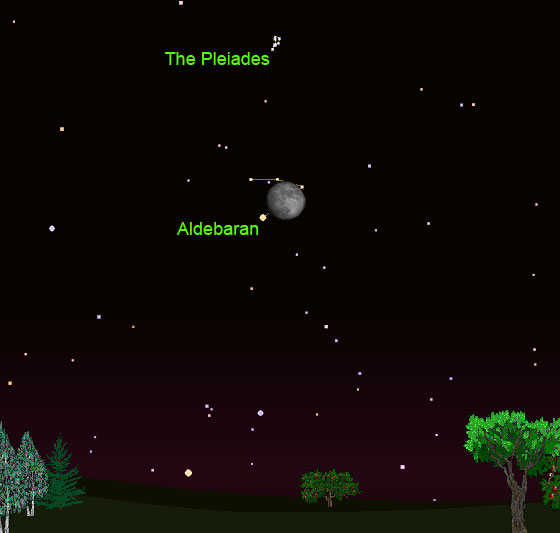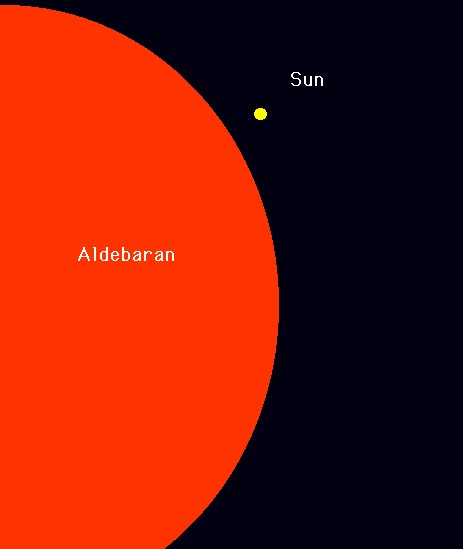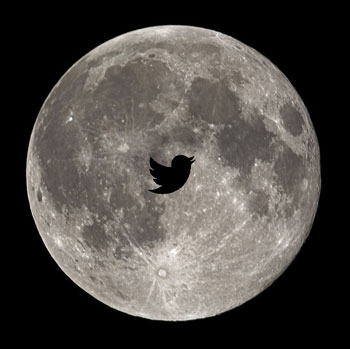You may see a star disappear behind the Moon the night of December 12/13! Over that night the Moon will pass in front of a very bright star in the Name A Star Live constellation Taurus.

Those of you in the eastern, central and mountain time zones of North America should see the star, called “Aldebaran,” disappear behind the Moon sometime during the first 1-3 hours after sunset. After sunset, look for the Moon over the eastern horizon. Aldebaran will be just to the left of the Moon. Then, over the course of the next few hours, the Moon will move closer and closer until it covers the star. Unfortunately, this celestial show won’t be visible in the Pacific time zone, or in the southern hemisphere.
Those of you in Europe will need to wake up early in the morning to see Aldebaran disappear. Look for the Moon and Aldebaran over your western horizon. If you’re in London, look especially during the 3-4 am time period. If you’re in Berlin, Paris or Rome, look between 4 and 5 am.
Aldebaran is a red giant star that’s called the fiery eye of Taurus the Bull. The name Aldebaran comes from the Arabic and means “The Follower,” because the star appears to follow the Pleiades star cluster throughout the course of any given night. (BTW, people often confuse the Pleiades with the Little Dipper: The Little Dipper is found over the norther horizon.) Aldebaran is the brightest star in Taurus, and is part of a prominent, V-shaped group of stars called the “Hyades.”

Aldebaran is about 65 light-years away, meaning that the light you see from Aldebaran this month was generated in 1951. That’s how long it took the light to reach us.
Get our Moon Tweets!

Did you know you can use the Moon to identify where your star’s constellation is in the night sky? Follow us on Twitter where we let you know when the Moon appears in a Name A Star constellation (area of the night sky).
Name A Star Live offers some really good tools to learn about the night sky and find your star’s constellation. Visit our website to learn about our Virtual Planetarium software, planisphere constellation finder, and First Light Astronomy Kit!